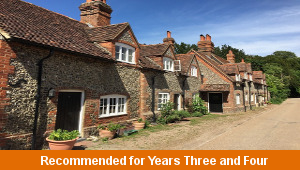Lesson Two – House Sales

This English teaching pack for Key Stage Two gets the children to explore and model how to work with adjectives and prepositions in some example expanded noun phrases that can be used to describe different houses for sale in the local area.
The class can explain and illustrate how to use persuasive language to compel someone to perform an action such as wanting to buy a house.
Download this teaching pack including a lesson plan, classroom activities and an interactive presentation to explore and model how to work with adjectives and prepositions in some example expanded noun phrases that can be used to describe different houses for sale in the local area
Activities in this teaching pack include a shared reading text to identify and explain how to use persuasive language to compel the reader to perform an action and differentiated sets of cards to build example sentences using adjectives and prepositions in expanded noun phrases to describe different houses for sale.
The interactive presentation gets the children to explore how to work with adjectives and prepositions to use in expanded noun phrases describing different houses for sale.
This lesson is part of an English scheme of work to get the children to use persuasive language to write newspaper adverts and radio commercials to sell houses, explore and use spellings of words that are near homophones and practise writing expanded noun phrases. There are teaching activities for shared learning, differentiated worksheets to support independent learning and interactive presentations to introduce concepts and key skills.
-

Rounding Hundreds
Explain and model how to round some different numbers to the nearest hundred based on the place values of the digits in each number
-

Rounding Tens
Identify and record how to round some different numbers to the nearest ten based on the place values of the digits in each number
-

Classic Animal Stories
Investigate the structure and content of classic works of fiction by significant authors with animals as the main characters
-

Cities, Towns and Villages
Research and present the history of a range of different buildings and people that are part of the local community using a school exhibition
